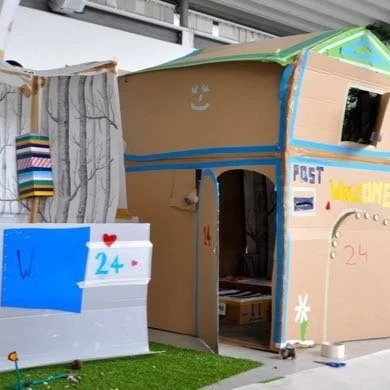Children’s Art School
Children’s Art School was founded and developed by Juliette Milette and Annabel Johnson between 2012 and 2014. Annabel took on the sole directorship in around 2015.
Aiming to develop children’s creativity and confidence, we ran after school art clubs and holiday courses led by practising artists, giving children time to develop their ideas in a supportive environment. Children worked independently and in small groups to explore artists' work, experiment with new materials and techniques, learn about the process of developing creative ideas and share their ideas. Above all, the workshops allowed children to have fun with other children who had similar interests.
After-School Art Clubs
Children’s Art School ran successful after-school Art Clubs at three primary schools in Wimbledon: Merton Park, Pelham and Dundonald.
The Art Club at Pelham Primary School thrived for six years and was always oversubscribed. Memorable projects included commemorating the school’s iconic willow tree before its removal due to redevelopment, and participating in the AccessArt village touring exhibition.
The children at the Merton Park Art Club had their work, from the project ‘The Way Things Go’, displayed at Turner Contemporary in Margate as part of the Generation Art project. Another standout project was the ‘Cut-Out Art’ series of sessions, inspired by Henri Matisse’s bold shapes and striking colours.
Holiday Art Courses
The holiday art courses run by Childrens Art School were more involved. These workshops aimed to give children a three-day immersive experience with an artist working in a particular field, or with a particular line of enquiry. Sculpture, painting, collage, forest schooling, willow weaving, architecture, illustration, animation and much, much more. They allowed children to work collaboratively on a large scale, using new and varied materials.
We partnered with local organisations such at Wimbledon Bookfest and worked in local green spaces like South Park Gardens and Wimbledon Common.
This work was innovative, groundbreaking and thoroughly rewarding. It enabled Annabel to feed her own creativity while her children were young. She cites her children as among the major influences on her work at this time.














